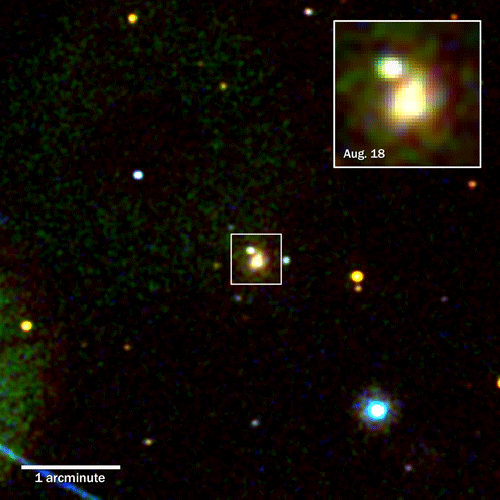
Relativistic Astrophysics and Astroparticle Physics deal with the study of the Universe using the language of the Theory of Relativity, necessary when special conditions are fulfilled such as velocities close to the speed of light as in relativistic jets, extreme gravitational fields in the vicinity of compact objects such as neutron stars and black holes, or extreme energies as in explosive phenomena. The properties of these systems are carried to us via different messengers: photons at all wavelengths, neutrinos, cosmic rays and gravitational waves, that we detect with instruments from ground and in space.
Compact objects of stellar mass, when in binary systems (X-ray binaries), accrete matter from the companion star with the production of hard X-rays. The phenomenon of accretion is similar even around supermassive black holes such as those in the center of active galaxies (AGNs) surrounded by an accretion disk. However, part of the matter is expelled by these systems as wind or jets of matter (electrons, atomic nuclei, cosmic rays and neutrinos) accelerated at relativistic speeds. Researchers at the Observatory study jets in X-ray binaries and AGNs, their formation in the early Universe, the mechanics of particle acceleration and different classes of jetted AGNs. They also study the diffuse X-ray emission that traces hot baryons in the Milky Way and in the whole Universe.
Sources in the violent Universe are often transients, namely they evolve on short timescales compared to stellar evolution. Among these, several research groups at the Observatory study some classes of X-ray binaries that show great or super-giant variation in luminosity over days or hours, and how these variations have to do with accretion. Other groups study Gamma-Ray Bursts (GRBs), the most powerful cosmic explosions, their origin, the structure and composition of their ultra-relativistic jets, their link with the gravitational wave sources observed by the LIGO and Virgo interferometers, and they use GRBs as probes for the early Universe.
At the Observatory we also provide support to the operations and scientific exploitation of many missions and experiments that are crucial to this field, such as REM, SOXS, eROSITA, the Neil Gehrels Swift Observatory, SVOM, MAGIC, ASTRI Mini-array and the Cherenkov Telescope Array (CTA).
Staff
Bernardini Maria Grazia
Bonnoli Giacomo
Boris Sbarufatti
Braito Valentina
Campana Sergio
Colombo Alberto
Covino Stefano
Dalla Barba benedetta
D’Avanzo Paolo
Foschini Luigi
Ghirlanda Giancarlo
Ghisellini Gabriele
Motta Sara
Nava Lara
Ponti Gabriele
Rigamonti Fabio
Romano Patrizia
Salafia Om Sharan
Sbarrato Tullia
Sbarufatti Boris
Tagliaferri Gianpiero
Tavecchio Fabrizio
Vercellone Stefano
